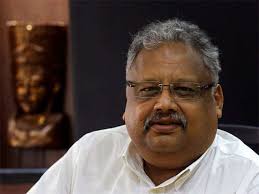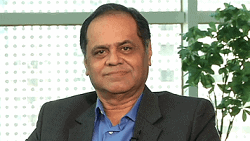 India: Taj Mahal
India: Taj Mahal
By Guy Avtalyon
Are you one of the rare investors who know what magnificent opportunities you can find in investing in the Indian stock market?
Or you are not?
It is a promising market. But, before investing in the Indian stock market, here’s what you should know. It is essential to focus on the stock market if you want to invest in it.
First of all, you should know that India is globally the quickest expanding economy. Measuring GDP, India takes seventh place in the world. Also, the third-largest buying power parity in the world. The growth is coming from the service industry. After the economic liberalization policies 1990s, Indians considerably improved life.
Investing is a confirmed way to produce long-term wealth. And besides, anyone can start investing.
Is the Indian stock market worthy to invest in?
In India, you have two stock markets where you can make your trades, the Bombay Stock Exchange (BSE) and the National Stock Exchange (NSE). You have to find the company has good nitty-gritty, an basically a strong company.
The BSE has more than 5,000 listed companies and NSE has about 1,600. Both stock markets match the same trading principles, trading hours, settlement rules.
Determining a sustainable company is easier said, than done. Anyway, we will give you short reviews of a few Indian companies with big economic moats around them.
What is MOAT?
Let’s go back to the past for a moment.
In the Middle Age, all around the castles were digging channels. Then, they would charge the channels with soil and water. That is the moat. And it was very helpful if the enemy tried to provoke or attack. Thanks to moats the castles were prepared to persist for a long time period.
The same idea of ‘MOAT’ is appropriate in the stocks.
Many companies have an unseen shield around themselves. That gives them an influence on the market. They have a brand. For example, Gillette or Colgate or Suzuki or Coca Cola. MOAT companies in India are, for example, Asian Paints or HDFC Bank. Also, MOAT companies may have a business monopoly. Such a case is with Coal India.
Indian Companies with big MOAT
- ITC: Cigarettes – ITC Ltd covers 81 % of the cigarettes selling in India
- Castrol India: Giant among automotive and industrial lubricants in India. Holds around 48% market share in the global Indian lubricant market.
- Asian Paints: It owns over 54% of the market share in the Indian paint industry.
- Jockey India: Actually, it is Page Industries, one of the biggest producers of underwear in India.
- Hindustan Unilever or HUL: Hindustan Unilever or HUL: They offer some of the popular brands, that are used by 2 billion people on a daily base. That, among others, include Cif, Dove, Lipton, Vaseline, Pepsodent, Wheel, etc.
- Pidilite Industries: It is adhesives producing company. Their brands are Fevicol, Fevikwik, Fevistick, M-Seal, etc.
- Britannia Industries: It is an Indian food corporation with Britannia and Tiger brands. Its headquarters in Kolkata, West Bengal. Among their offered brand names are biscuits VitaMarieGold, Tiger, Nutrichoice Junior, Treat, Pure Magic, Milk Bikis, Good Morning, Bourbon, Nice, Little Hearts between others. Nestle: It is a famous producer of “Maggi”, chocolates, etc
- United Spirits or USL: is an Indian alcoholic beverage company and the world’s second-largest spirits company by volume. USL exports its products to over 37 countries. It has more than 140 liquor brands such as McDowell’s, Royal Challenge, Antiquity, Vladivar, Romanov, etc.
IT and business services outsourcing is a very important part of India’s economy.
Indians are very well educated, skilled and English-speaking. Moreover, they are not expensive workers. That’s why the IT sector provided about 8% of the country’s GDP.
Business services outsourcing is a less important but more popular business in India. BPO is the express increasing part of the industry in India. So, it is valuable to consider investing in those companies.
How to invest in the Indian stock market if you are not its resident
If you are not an Indian resident the Indian stock market is a foreign market for you. But you can still invest. For example, you can buy stocks directly. Honestly, it is a bit tricky. Much more than investing in domestic stocks. But if you want to invest in some company listed on a foreign exchange you can do it over your brokerage.
If your brokerage provides that kind of service, it has to contact the market maker in India. Sincerely, you have to be prepared that the stocks you want are not accessible. That is the bad side. The simplest way is to set up an account directly in some of India’s brokerage. Almost all the notable companies in India are listed on both the markets.
Even if you are investing in the long-term, always look for a ‘moat’ in the company. It improves the profitability of the company. And it is very important in India’s markets. Having a business ‘moat’ gives these companies plenty of support.












